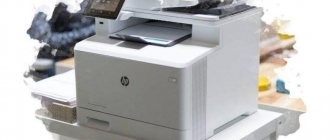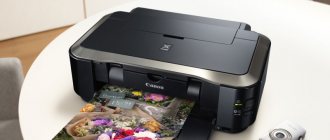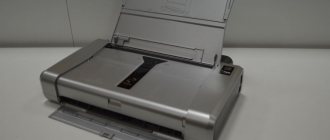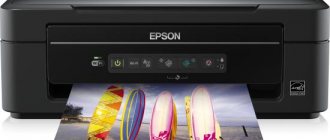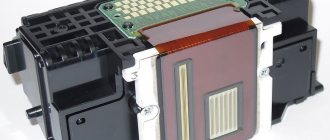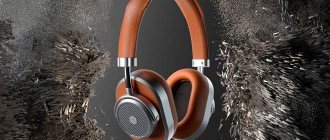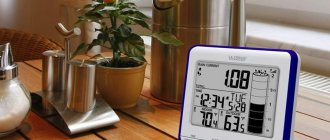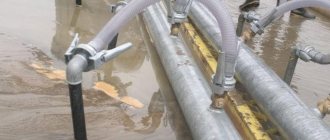Additive technologies have been reaching the masses for a long time: institutes and research centers have been closely working on them since the 80s, and now the moment has come when you can touch high-tech and master 3D printing right at home. You don’t even have to break the bank to do this: prices for 3D printers are on par with average smartphones. Let's figure out how it works and what opportunities open up for makers and DIY enthusiasts!
Everything for 3D printing ❯
Why do you need a 3D printer?
The printer will be very useful for DIY engineers. You no longer have to look for a universal housing for your project and then drill additional holes in it. 30 minutes of design, a few hours of printing - and you already have a ready-made case that is ideal for your device. Does an assembly of 5 shields fit anywhere? Forget about such problems.
The printer will definitely help in repairing things around the house. Everyone has had a situation in their life when they had to throw away something even though only one plastic part was broken. With the help of 3D printing, you can easily replace rare plastic parts in devices that are difficult to find separately.
Until you learn how to model plastic parts yourself, you can simply download them on the Internet. There are many sites with millions of ready-made free models that users freely share. We have dedicated a separate article to searching for models.
3DP
3DP (Three dimensional printing) technology or “Inkjet three-dimensional printing” is as follows: glue is applied to the material in powder form, then a fresh layer of powder is applied on top of the glued layer, and so on for the entire printing cycle. This technology was invented in 1993 at MIT (Massachusetts Institute of Technology). The main advantages of this technology include the ability to add paint to the glue (printing in different colors), the ability to use it at home and for household needs, you can use different materials in powder form (glass, rubber, bronze, wood, etc.). It is also worth noting that in this type of printing there is no need to create additional supports for the prototype. The main disadvantages are that the output is a rather rough model (printing up to 100 microns) and that additional post-processing of the resulting part is often required. Any products designed for strong mechanical impact cannot be printed using the 3DP method. The main purpose of such 3D printers is to print souvenirs and gifts, layouts, and also, if you use food glue as a binding element, to print sweets and sweets.
What are the types of 3D printers?
There are several main types of 3D printers, which differ radically in their operating principles.
FDM (Fused Deposition Modeling) technology
The most common type is FDM printers with layer-by-layer deposition of plastic. They work due to a movable print head with a heating element. Plastic is fed into it in the form of a rod, which melts and is squeezed out in liquid form onto the printing table. In this case, the plastic is blown by a fan and instantly hardens, and the head begins to squeeze out a new layer on top of the hardened one.
SLA technology (Stereolithography Apparatus)
SLA printers work on the basis of stereolithography: instead of plastic, a special photopolymer resin is used, which hardens under the influence of ultraviolet rays. To print, resin is filled into a vat, at the bottom of which there is a display with ultraviolet pixels. A drawing of the bottom layer of the model is displayed on it within a few seconds. In this case, the resin above the display hardens into the displayed pattern and then sticks to a special movable table on top. After this, the table with the first layer is raised, and polymerization of the next layer occurs in the resin.
SLS (Selective Laser Sintering) technology
SLS printers use selective laser sintering technology, which uses special plastic powder. During the printing process, a thin layer of powder is poured in and the printer lasers it to harden the layer to match the model. Next, the next layer of powder is poured and fused with the previous one - and so on in a circle. In the end, all that remains is to clean the finished part from any remaining powder, which can then be reused.
Technology comparison
Each type of 3D printer has its own advantages and disadvantages.
- SLS printers are large and require expensive raw materials. They are often used in high-tech production for one-piece parts.
- SLA printers are much more widespread. An ultraviolet display improves accuracy, but working with toxic photopolymer resin at home is difficult.
- FDM printers are the most popular among hobbyists. A plastic rod is much cheaper than a special powder or photopolymer resin. However, to print complex geometry on such a printer, you will have to take care of auxiliary supports. And the printing speed is on average lower than with other technologies. But FDM printers are the easiest and safest to maintain.
Polyjet
The basis of this technology is the following principle: using small nozzles, a photopolymer is applied to any surface and immediately polymerizes under the influence of UV radiation. This printing technology was developed by the Israeli company Objet in 2000, but is now owned by Stratasys. The distinctive features of this type of 3D printer are that you can use a wide range of materials (photopolymer plastic of different composition, color and density), use a small layer thickness (up to 16 microns - suitable for creating small and smooth parts) and print relatively quickly due to the use liquid materials. Polyjet is the only technology, at least today, that allows you to combine multiple materials in one prototype! But there are also disadvantages, the main one of which is the fact that you can only print using photopolymer plastic (as a rule, photopolymer plastic is very expensive). Polyjet technology is used mainly in industry, medicine and education, although today there are also household models of 3D printers for various purposes.
How to prepare a seal
The process from the birth of an idea to the release of a finished plastic part is not difficult - a student can handle it. We've broken it all down in our 3D printing guide using the Flying Bear Ghost 5 printer as an example, and here we'll show you the general principle.
Original model
First you need to create or download a 3D model of the future part. As a rule, sources are stored in STL format, which describes the polygonal structure of the model in the form of many triangles. But you won’t be able to immediately send such a file to the printer: for successful printing, you first need to break the detailed 3D model into layers that the printer can handle.
Slicing
The program for slicing models (slicer) will require very little from you - enter the model of your printer and set the printing settings: layer thickness, percentage of internal filling of the part, auxiliary supports, and the like. Based on this data, the slicer will automatically prepare a special code for the printer - G-Code, which describes how to move the print head, to what temperature it should be heated and at what speed to extrude the plastic in order to obtain the desired model layer by layer. Then all that remains is to load this code into the 3D printer and be patient until the end of printing.
The entire process of preparing a model is clearly illustrated by the program and is provided with intuitive tips for novice users. In general, slicing is not as scary as it is made out to be!
Treatment
After the model is ready, it can be further processed with sandpaper or a chemical solution. This will smooth out any unevenness between layers and the piece will look exactly like the factory one. There are many life hacks on the Internet that will help minimize the flaws of the model and give it an improved look.
Printing consumables
The properties of a printed item largely depend on the raw material. As we have already said, FDM 3D printers use plastic filaments as consumables, and you have a huge scope for experimenting with different types of plastic.
- PLA plastic lends itself well to extrusion and allows you to print complex shapes at relatively low head operating temperatures of 190 °C. The biodegradability of PLA plays into the hands of the environment, but at the same time, things made from it are not very durable.
- PETG plastic is stronger than PLA, but is also well suited for printers with temperatures around 200 °C. Varieties of PET plastic are familiar to you from bags and plastic soda bottles.
- ABS plastic has higher strength compared to other types. However, for high-quality printing from ABS plastic, your printer will need an increased extrusion temperature of about 250 °C and a table heated to 120 °C, so not every model can support it.
- HIPS plastic is similar in temperature properties to ABS, but has low agglomeration with it and is easily removed with an organic solvent. Because of this, HIPS plastic is often used to print composite models and supports for ABS models.
- Wood plastic is made with the addition of wood dust. Finished models made from it do a good job of imitating wood not only in their appearance, but also in their smell.
Plastic spools are found on sale at every step - it will not be difficult for you to choose suitable consumables and combine different properties and colors of parts when printing.
LENS
3D printing in this case is based on the fact that material in powder form is applied to a focused laser beam and instantly sintered. Using this principle, the entire three-dimensional model is built layer by layer. This 3D printing technology (LENS - LASER ENGINEERED NET SHAPING) is used to create metal parts and therefore it was it that opened the doors of 3D printers to large industry, which, in fact, influenced the growth of popularity of 3D printers in general around the world. These types of 3D printers , among other things, have another great advantage - powders can be mixed and various alloys can be obtained directly at the time of printing (sintering). The most famous manufacturer of equipment for this type of printing is Optomec.
SLA
Another name for this technology is stereolithography. The raw material for such printers is a liquid photopolymer, which hardens under the influence of a laser, ultraviolet or infrared radiation. This causes the liquid to become hard plastic. The laser beam is controlled by two mirrors located opposite each other.
It is actively used in medicine, forensics, and in the production of jewelry.
Advantages of this type of this type of 3D printing:
- high accuracy;
- the highest resolution among all polymer printing technologies;
- smooth surface of the object;
- high speed when working with single small objects.
Among the disadvantages is that the technology is not suitable for working with large batches; the speed is greatly reduced. This technology is often taught in 3D printing training https://tech-school.ru/engineering/course-3d-print for beginners.
Criticism and problems
❌ Slow and without guarantees: printing is quite slow, not accurate enough. A huge problem with amateur printers is defects. For example, a part could peel off from the substrate while printing, and all hell would break loose. Or the motors will calibrate, and the nozzle will start to miss the right places.
❌ Low efficiency: To print a 10 × 10 cm part, you need a printer measuring at least 50 × 50 cm, which will cost several hundred dollars.
❌ Not the most durable materials: 3D printing is still limited to plastics and resins. There are separate printing technologies based on metal powder, but if you need a steel part, you don’t need a 3D printer, but a normal lathe and machine. But not every part can be made on a machine.
❌ It’s not always clear why. In industry, 3D printers are used for prototyping, but these technologies are not used in mass production. For home use it is also unclear: 3D printers print small plastic things for amateur projects... and that’s it. There are very few cases when an ordinary person might want to print something useful in his home.
Lamination
LOM method
LOM (laminated object manufacturing) - printing objects by lamination. The source material (a sheet of paper or thin plastic) with an adhesive coating is attached to the surface of the desktop with a heated roller. A laser beam cuts out the cross-sectional contours of the future product in the sheet. Then the next sheet is applied, the operation is repeated until the construction of the object is completed.
During printing, the sheets are glued together over the entire area. The sheet around the product is laser cut into small fragments to make it easier to remove excess. However, special care is required when removing the finished product and separating excess material.
The LOM method has lower accuracy in reproducing product surface details than the SLA and SLS methods. It allows the production of fairly large-sized products. According to their physical characteristics, paper products are close to wood. This allows them to be machined. In general, objects made by this method usually require additional mechanical processing.
The advantage of the method is its low cost. It is used in science and education for the production of architectural models, models, and exhibits.
SDL method
SDL (Selective Deposition Lamination) - lamination using the selective deposition method (advanced LOM technology).
3D printing on regular offset paper. Glue is applied to paper sheets not completely, but selectively. In places that form the cross-section of the future product, an adhesive material of a higher density is applied, in the rest (excess material and supporting structures) - a lower density. During printing, the sheets are pressed together. It turns out that the bond between the layers “inside” the product is stronger than between the supporting materials. In addition, excess and supporting material is cut into small components. Overall, this greatly simplifies the process of removing the finished product from the printer. For cutting sheets, a tungsten carbide blade is used rather than a laser.
The method allows multi-color printing and is low cost. You can create larger products by connecting them with hinges and locks. Finished products require processing to increase their moisture resistance.
M.J.M.
The abbreviation MJM stands for Multi Jet Modeling. It is a type of inkjet printing. In this case, the object is created layer by layer, using a print head on several nozzles. The raw material is thermoplastic, heated to a waxy state.
The scope of application of MJM is extensive. Inkjet printers are used in foundries, jewelry making, custom medical prosthetics, and miniature prototyping.
Advantages of the technology:
- high accuracy;
- ability to work with a large number of different materials;
- the ability to create colored objects;
- high quality printing.
Among the disadvantages is that when designing a product of complex shape with protrusions, it is necessary to think through the supporting elements for it.
Photopolymerization
DLP method
DLP (Digital Light Processing, Direct Light Projection) - printing of products by polymerization of photopolymer resins under ultraviolet irradiation. The method is based on the property of photopolymer resins to harden under ultraviolet irradiation. The movable workbench of the 3D printer is immersed in a container of liquid resin. A stream of light from an ultraviolet DLP projector is directed onto the photopolymer. The configuration of the light flux is determined by a mirror or lens and corresponds to the shape of the product layer. The thinnest layer of resin hardens (polymerizes) when exposed to light. After building one layer, the desktop moves to a height equal to the thickness of this layer. Then the next layer is formed on the already hardening layer. The process is repeated until the product is ready. Subsequently, it is subjected to final exposure to a UV lamp for complete curing.
The DLP method is characterized by high speed and accuracy in constructing products of complex shapes. It is much faster than the long-known SLA method, which also uses photopolymerization technology. DLP printers are affordable, and this method is becoming increasingly popular among both hobbyists and professionals.
The method is used in dentistry, jewelry, the production of prototypes, parts and souvenirs.
LCD method
LCD (Liquid Crystal Display) - printing of products by polymerization of photopolymer resins under ultraviolet irradiation. The process technology is identical to the DLP method. The difference is that the UV radiation flux here is generated by the LED matrix, and its configuration, corresponding to the shape of the product layer, is determined by the LCD display.
The LCD method is also characterized by the high speed of constructing products of complex shapes. It is more accurate than the DLP method and much faster than the SLA method. Among these three methods, LCD printing is the most affordable, and therefore is rapidly developing, gaining positions in dentistry, jewelry, the production of prototypes, parts and souvenirs.
SLA method
SLA (Laser Stereolithography) - production of products by laser irradiation of photopolymer resin . The irradiation source is an ultraviolet laser. Its narrow beam is directed at the photopolymer and, as it were, “scans” the layer of the product according to the digital model. At the points where the beam is focused, the resin hardens (polymerizes). After building one layer, the desktop moves to a height equal to the thickness of this layer. Then, on the already hardening layer, the next layer is formed by a laser beam. The process is repeated until the product is ready. In the future, its surface can be mechanically processed and painted.
The SLA method is very precise and allows you to print products with complex shapes. The disadvantage of the method is the relatively slow laser scanning of the photopolymer layer. In this it is significantly inferior to DLP and LCD methods. But at the same time, SLA ensures a very high surface quality of the product. Therefore, it is widely used for the production of prototypes of parts, dental and other prosthetics, and jewelry.
GDP method
GDP (Gel Dispensed Printing) is a 3D printing method that combines the advantages of FDM (layer-by-layer deposition printing) and DLP (photopolymerization) methods . The working material is a unique photopolymer acrylic gel Dimengel, which has a high degree of viscosity. The print head extrudes a thin layer of gel onto the build plate. It hardens almost instantly under the influence of UV radiation from powerful lamps located in the same block with the head. Layering and curing of the material occurs at a very high speed. Therefore, GDP printing does not require the support of horizontal surfaces that other methods require. The GDP printer allows you to immediately print inclined and even horizontal surfaces without wasting gel on printing supporting structures. This ensures material savings and record-breaking printing speeds.
The GDP printer is equipped with two independent print heads. Therefore, in the working chamber you can simultaneously print two different products or two parts of one large object. Taking into account the large volume of the printing area (1200×1500×1800 mm), GDP printing allows you to create figures over 3 meters in size when gluing them from several parts. Finished products lend themselves perfectly to sanding and painting.
The method was developed quite recently, but has already shown its effectiveness in such areas as the production of unique exhibition exhibits and samples, decorations, mannequins, sculptures, various advertising materials, prototypes and master models.
